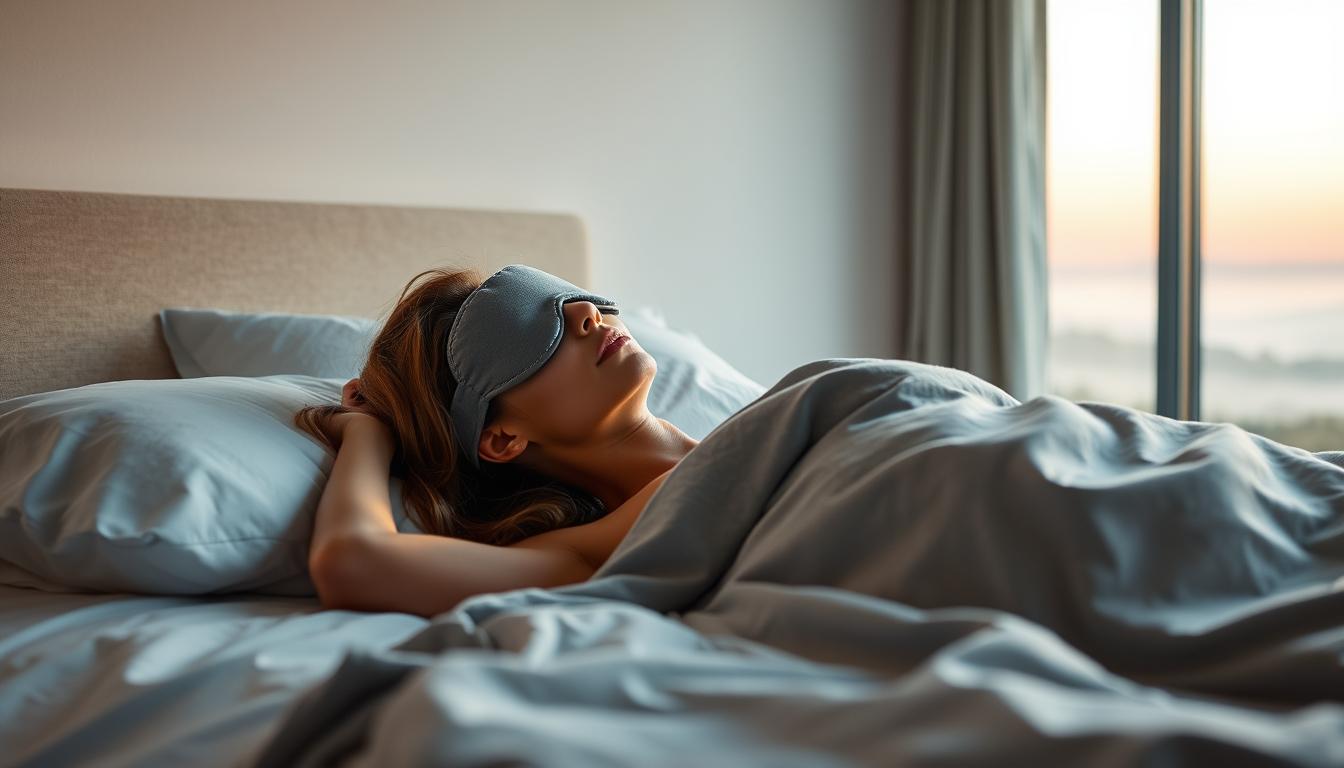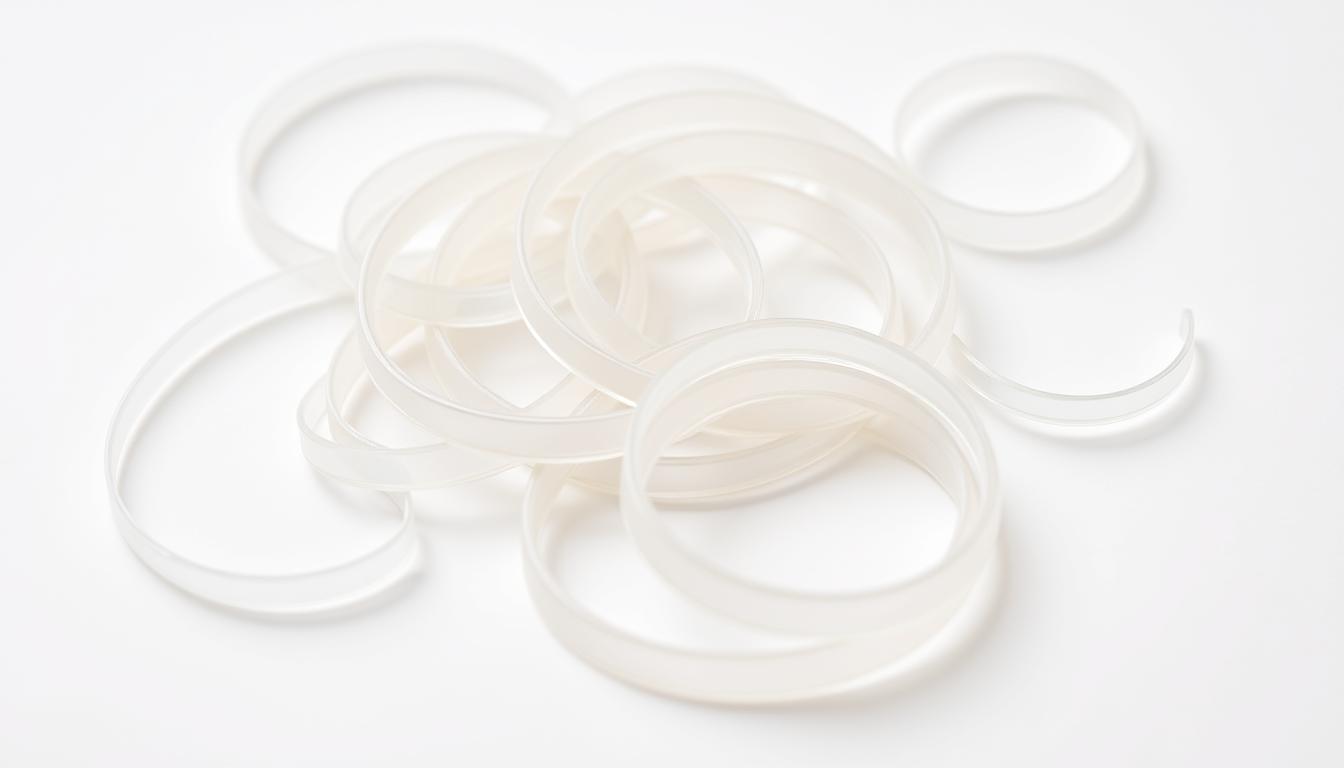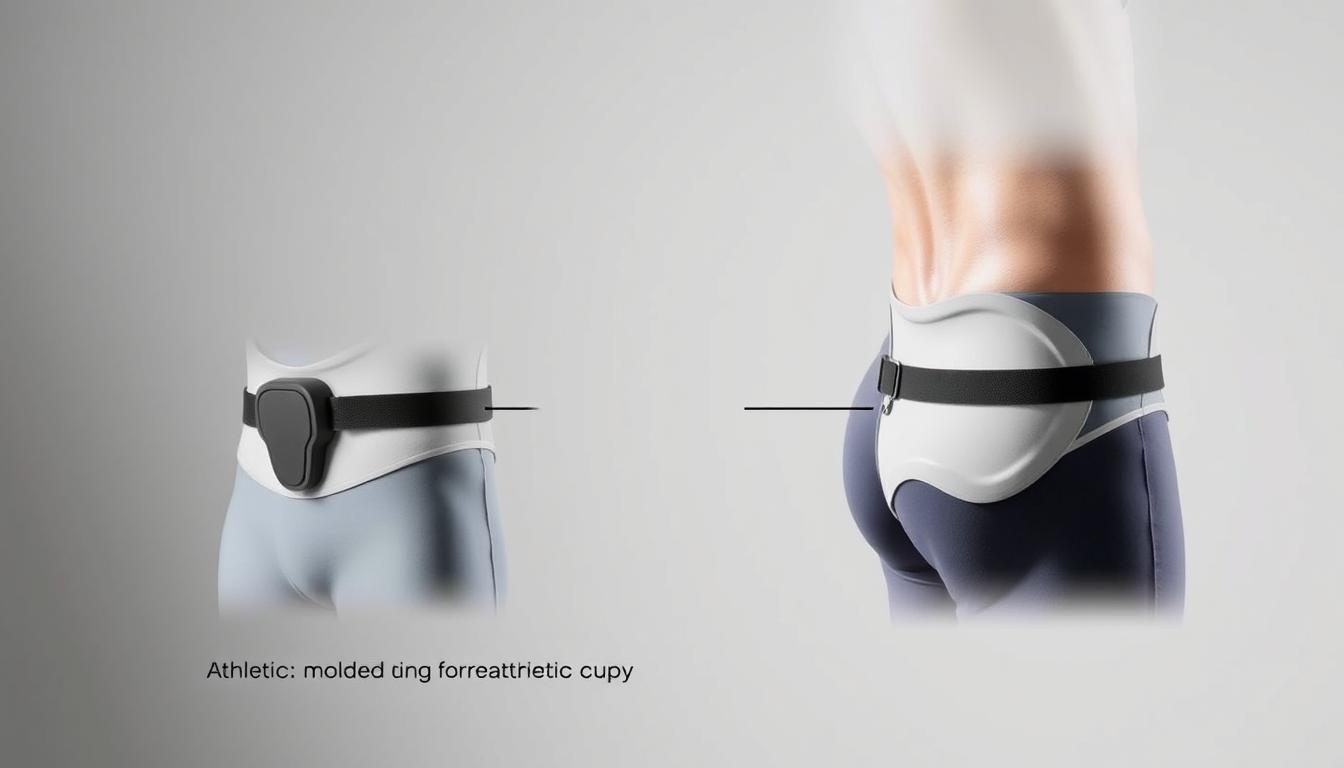Learning how to wear an eye mask can change your sleep for the better. It’s great for light sleepers, travelers, or anyone who wants to avoid light. Mastering the art of wearing an eye mask is key to getting good sleep.
Sleep masks are more than a luxury; they’re a game-changer for better sleep. The right tips can turn any place into a dark, cozy space. Whether at home or in a hotel, your eye mask is your ticket to deep sleep.
Finding the right mask and how to wear it is important. Everyone’s face shape, sleep style, and comfort needs are different. This guide will help you find your ideal sleep mask.
Key Takeaways
- Eye masks can dramatically improve sleep quality
- Proper fit is essential for maximum comfort
- Material selection matters for skin sensitivity
- Correct positioning blocks light effectively
- Practice makes perfect when wearing a sleep mask
Understanding the Benefits of Sleep Masks
Sleep masks are more than just a trendy accessory. They are a powerful tool for improving your sleep quality. The best way to use eye mask technology involves understanding its profound impact on your body’s natural sleep mechanisms.
Our sleep patterns are deeply connected to light exposure. By creating a personal darkness zone, eye masks help regulate your body’s internal clock and optimize sleep conditions.
Melatonin Production Boost
Darkness is key for melatonin production, the hormone that regulates sleep cycles. When you use an eye mask, you’re telling your body it’s time to rest. This helps:
- Accelerate melatonin release
- Reduce time needed to fall asleep
- Improve overall sleep quality
Light Blocking Capabilities
The best way to use eye mask technology involves selecting a mask with superior light-blocking properties. Complete darkness is essential to prevent sleep disruptions from ambient light sources like streetlamps, digital displays, or early morning sunlight.
Sleep Quality Enhancement
By creating an optimal sleep environment, eye masks can dramatically improve your rest. They help reduce eye strain, minimize sleep interruptions, and support deeper, more restorative sleep cycles.
Types of Eye Masks Available
Discovering the perfect eye mask is like finding your sleep soulmate. Our eye mask fitting guide shows a world of comfort and style. It goes beyond basic sleep accessories. Each mask has unique features to change your sleep experience.
Let’s explore the diverse landscape of eye masks for different sleeping preferences:
- Classic Flat Masks: The versatile go-to option for most sleepers
- Contoured Masks: Precision-engineered for maximum light blocking
- Weighted Masks: Providing gentle pressure for deep relaxation
- Tech-Enhanced Masks: Featuring innovative sleep technologies
Our eye mask fitting guide breaks down each mask type’s key characteristics. It helps you make an informed decision.
| Mask Type | Best For | Key Features |
|---|---|---|
| Silk Masks | Sensitive Skin | Smooth, breathable, temperature-regulating |
| Contoured Masks | Light Sleepers | Molded shape, zero pressure on eyes |
| Cooling Gel Masks | Hot Sleepers | Temperature control, reduced puffiness |
| Blackout Masks | Total Darkness Seekers | Maximum light blocking, wide coverage |
Whether you’re a side sleeper, back sleeper, or frequent traveler, there’s an eye mask for you. Our guide ensures you’ll find the perfect match to improve your sleep quality.
Selecting the Right Eye Mask Material
Choosing the right eye mask material is key for a good night’s sleep. The fabric you pick can really change how you feel in the morning. Let’s look at the top picks that can make your bedtime routine better.
Fabric is more important than you might think when picking an eye mask. Each material has its own benefits for a comfortable night’s sleep.
Silk: The Luxurious Choice
Silk eye masks add a touch of elegance to your sleep. They offer amazing advantages:
- Ultra-smooth texture that prevents skin friction
- Natural temperature regulation
- Gentle on sensitive skin and hair
- Hypoallergenic properties
Cotton: The Breathable Classic
Cotton is a classic choice for comfort and practicality:
- Maximum breathability
- Easy to wash and maintain
- Affordable pricing
- Suitable for most skin types
Synthetic Materials: Modern Sleep Technology
Modern synthetic materials are changing how we sleep. Fabrics like moisture-wicking polyester and memory foam offer new ways to sleep better.
Hypoallergenic Considerations
For those with sensitive skin or allergies, hypoallergenic materials are a big help. Look for masks made from:
- Bamboo-derived fabrics
- Organic cotton
- Specially treated synthetic materials
Pro tip: Always check the material composition before buying to ensure comfort and skin type compatibility.
How to Wear Eye Mask: Essential Steps
Learning how to wear an eye mask can change your sleep for the better. The right steps can turn a bad night into a peaceful one.
Start by getting your sleep area ready. Here are the essential steps for comfort:
- Cleanse your face well to remove makeup and oils
- Make sure your skin is dry and has no moisturizers
- Check the mask’s elastic band for the right fit
When you put on your eye mask, how you place it matters a lot. Gently put the mask over your eyes. It should cover them fully but not too tight. It should fit well on your nose and temples.
Here are some tips for using your eye mask:
- Adjust the strap so it fits well but not too tight
- Smooth out any wrinkles in the mask fabric
- Make sure no light can get through the edges
Pro tip: Practice wearing your eye mask during the day to find the best fit. With a bit of patience, you’ll get the sleep you need.
Proper Eye Mask Positioning Guide
Finding the right eye mask fit can greatly improve your sleep. It’s not just about blocking light. It’s about creating a comfortable sleep space that fits your face perfectly.
Getting the mask right involves several important steps. These steps can make or break your sleep mask experience. Here are the key strategies for comfort and effectiveness.
Bridge of Nose Alignment
The bridge of your nose is key for your eye mask. Follow these tips for the best placement:
- Make sure the mask fits smoothly across your nose bridge
- Prevent gaps that let light in
- Get a snug seal without too much pressure
Temple Placement Tips
Proper temple placement is vital for comfort and effectiveness. Here are some expert tips:
- Place the mask’s edges softly against your temples
- Ensure even pressure on both sides of your head
- Adjust to avoid any discomfort
| Positioning Area | Ideal Placement | Common Mistake |
|---|---|---|
| Nose Bridge | Smooth, snug fit | Loose or overly tight positioning |
| Temples | Gentle, even pressure | Uneven or painful compression |
| Overall Fit | Contoured to facial structure | One-size-fits-all approach |
Pro tip: Everyone’s face is unique, so don’t be afraid to experiment until you find your perfect eye mask positioning. The right fit can change your sleep, blocking light and providing comfort.
Adjusting Straps for Optimal Comfort
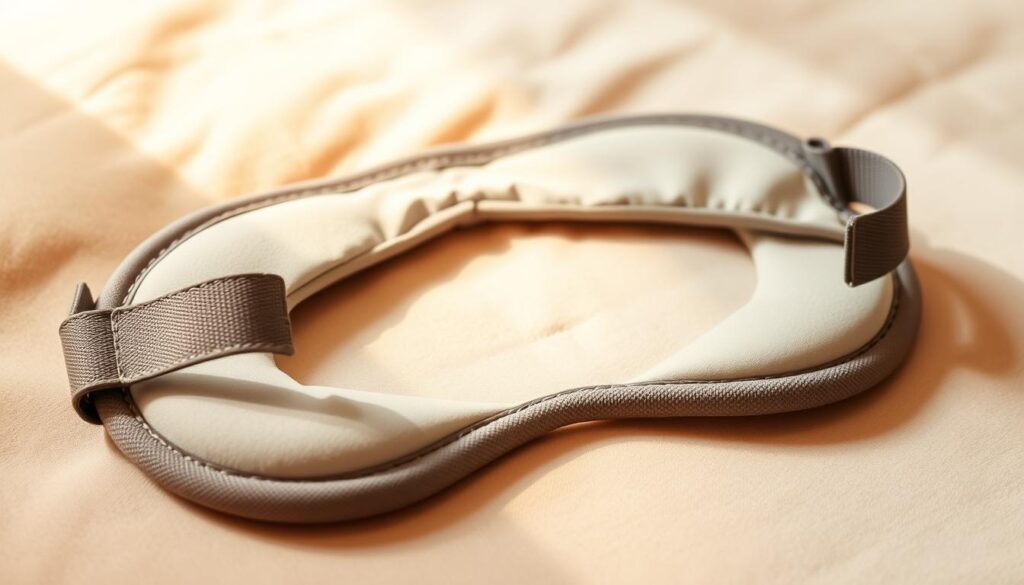
Adjusting the straps on your eye mask is key for a great night’s sleep. The right fit can turn a bad night into a good one.
Eye mask straps come in different sizes. Everyone’s head is different, so it’s important to find the perfect fit for you.
- Start with a strap that’s a bit loose
- Adjust it a little bit at a time on both sides
- Make sure the tension is even all over your head
- Look out for any spots that might feel too tight
If you have sensitive skin, look for masks with soft, stretchy straps. Avoid Velcro straps, as they can sometimes irritate your skin.
Here are some tips for wearing an eye mask:
- Try it out during a short nap first
- Adjust it while looking in a mirror
- If it’s too tight, try rotating the mask a bit
The aim is to find a fit that’s both snug and comfortable. Your eye mask should feel like a gentle hug all night long.
Common Eye Mask Wearing Mistakes
Getting the hang of wearing an eye mask is more than just putting it on. Our tips can help you steer clear of common mistakes that might mess up your sleep. This way, you can sleep better and feel more comfortable.
Sleep masks are meant to help you sleep better. But, making certain mistakes can ruin their purpose. Knowing these issues can help you get the most out of your eye mask.
Pressure Point Problems
Eye masks that are too tight can cause discomfort. This discomfort can lead to headaches, tense facial muscles, and poor blood flow.
Fit Issues to Avoid
Finding the right fit is key for comfortable eye mask use. Here’s a quick guide to spot and fix common fit problems:
| Fit Issue | Potential Problems | Solution |
|---|---|---|
| Too Tight | Pressure points, headaches | Adjust strap for gentle, comfortable fit |
| Too Loose | Light leakage, sliding | Choose mask with secure, adjustable straps |
| Incorrect Size | Incomplete eye coverage | Measure face, select appropriate mask size |
Remember, comfort is key when choosing and wearing your eye mask. Pay attention to how it feels. Make adjustments as needed for a good night’s sleep.
Maintaining Your Eye Mask’s Cleanliness
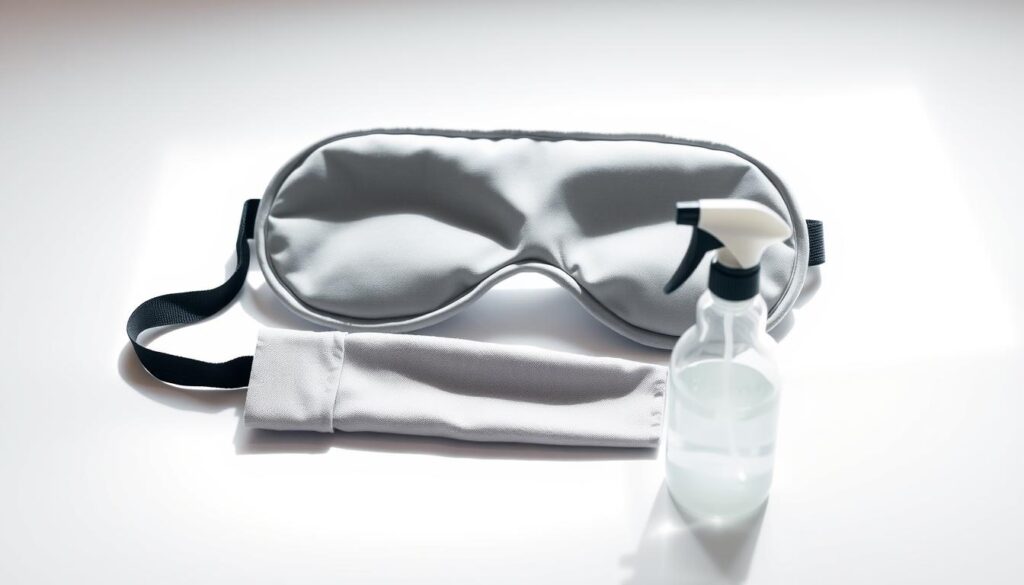
Keeping your eye mask clean is key to using it well. Regular care keeps it hygienic and makes it last longer.
Cleaning your eye mask is very important. Dirt, oils, and bacteria can build up fast. This can cause skin problems or make the mask less effective.
Cleaning Methods for Different Materials
- Silk Masks: Hand wash with mild detergent, air dry flat
- Cotton Masks: Machine washable on gentle cycle
- Synthetic Masks: Spot clean or hand wash with care
Here’s how to clean your eye mask the right way:
- Wash it every 3-5 times you use it
- Use a mild, fragrance-free detergent
- Stay away from harsh chemicals or bleach
- Let it air dry completely
| Mask Material | Cleaning Frequency | Recommended Method |
|---|---|---|
| Silk | Every 3-4 uses | Gentle hand wash |
| Cotton | Every 5-7 uses | Machine wash gentle cycle |
| Synthetic | Every 4-6 uses | Spot clean or hand wash |
Pro tip: Use several eye masks at once. This way, you always have a clean one ready. It keeps your sleep masks in top condition.
Best Practices for Night Time Use
Using an eye mask right is more than just putting it on your eyes. Our guide will show you how to make your bedtime routine better. It will help you sleep more comfortably and effectively.
Using an eye mask well needs a few important steps. Knowing how to use it at night can really help you sleep better.
Pre-Sleep Routine Integration
Adding an eye mask to your bedtime routine takes some planning. Here are the key steps:
- Remove makeup and complete skincare routine
- Dim bedroom lighting 30 minutes before sleep
- Adjust mask for comfortable positioning
- Practice relaxation techniques while wearing mask
Position Maintenance Tips
Keeping your eye mask in the right place is important for good sleep. Here are some tips to help you keep it in place all night:
| Sleep Position | Mask Adjustment Technique |
|---|---|
| Back Sleepers | Center mask, ensure even pressure |
| Side Sleepers | Use contoured masks with side padding |
| Stomach Sleepers | Choose lightweight, flexible masks |
Picking the right eye mask and following these tips can change your sleep for the better. Comfort is key for a good night’s sleep.
Addressing Common Comfort Issues
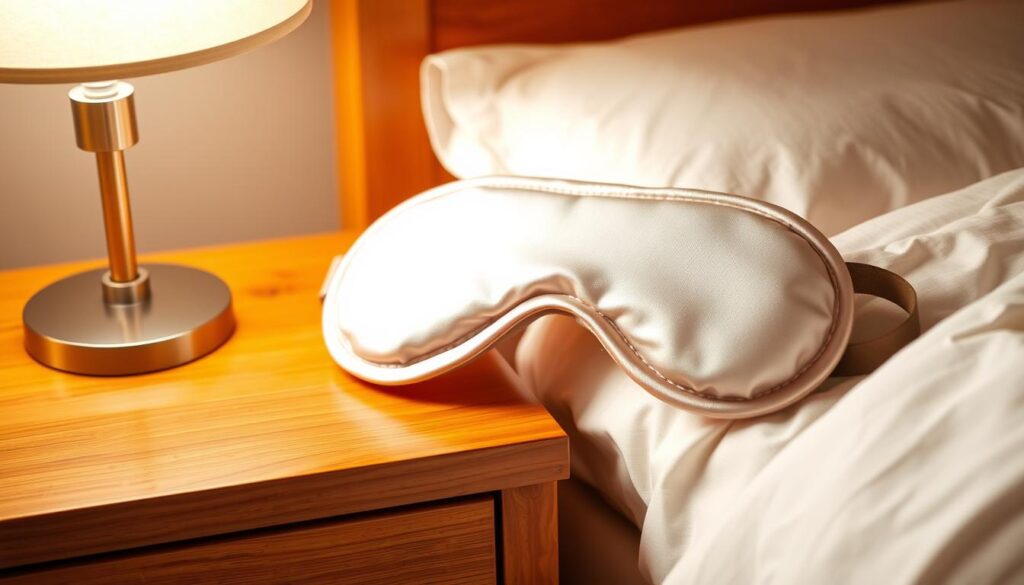
Wearing an eye mask can greatly improve your sleep. But, you might face some comfort challenges. We’ve found ways to help you overcome these issues and sleep better.
Getting the right fit and pressure is key. Masks that are too tight or don’t fit right can hurt your sleep and cause eye irritation. Here are some tips to solve these common problems.
- Adjust strap tension to prevent headaches
- Choose masks with contoured eye spaces
- Select breathable materials
- Minimize light leakage
If you have sensitive skin, you need to be extra careful. Hypoallergenic materials and keeping your mask clean can help avoid irritation.
| Comfort Issue | Recommended Solution |
|---|---|
| Tight Straps | Loosen and readjust for gentle fit |
| Eye Pressure | Use contoured, padded masks |
| Skin Irritation | Choose hypoallergenic fabrics |
| Heat Retention | Select moisture-wicking materials |
Finding the right eye mask is a personal journey. Try out different styles and materials until you find the one that works best for you.
Eye Mask Care and Storage Tips
Keeping your eye mask in good shape is key for its long life and effectiveness. It’s not just about cleaning it. It’s about keeping it in top condition.
Our guide will show you how to keep your eye mask clean and comfy. This ensures it stays hygienic and effective.
Essential Cleaning Methods
Cleaning your eye mask needs care. Different materials need different cleaning methods:
- Silk masks: Use specialized silk detergent
- Cotton masks: Gentle hand wash with mild soap
- Synthetic masks: Follow manufacturer’s washing instructions
Optimal Storage Solutions
Storing your eye mask right keeps it safe from dust and damage. Here are some tips:
- Use a dedicated protective pouch
- Keep original packaging when possible
- Store in a cool, dry place
| Material | Recommended Cleaning | Storage Tips |
|---|---|---|
| Silk | Gentle hand wash | Silk bag, avoid direct sunlight |
| Cotton | Machine wash gentle cycle | Breathable fabric pouch |
| Synthetic | Follow specific care label | Original packaging preferred |
By following these tips, you’ll make your eye mask last longer. It will stay in top shape for better sleep.
Combining Eye Masks with Other Sleep Aids
Getting better sleep is more than just using an eye mask. We’ve found some great ways to use eye masks with other tools to help you sleep better.

To make the best sleep space, you need to use all your senses. Here are our best tips for using your eye mask with other sleep helpers:
- Noise reduction techniques
- Relaxation technology
- Aromatherapy solutions
- Temperature regulation
Let’s see how different sleep tools can work together with your eye mask to change your bedtime routine.
Sound Management Strategies
Using your eye mask with earplugs or a white noise machine blocks out outside sounds. These tips help block out more than just light, protecting your sleep.
| Sleep Aid | Compatibility with Eye Mask | Sleep Quality Impact |
|---|---|---|
| Earplugs | Excellent | High |
| White Noise Machine | Very Good | Moderate to High |
| Aromatherapy Diffuser | Good | Moderate |
Technology and Relaxation
New sleep tech offers cool ways to use with eye masks. Sleep tracking apps show how different tools can help you sleep better. Smart devices can make a sleep space just for you.
It’s all about finding what works best for you. Try out different sleep tools to find your ideal bedtime routine.
Travel-Specific Eye Mask Usage
Traveling can mess up your sleep routine. But, knowing how to wear an eye mask can make your trip relaxing. Whether you’re on a long flight or in a new hotel room, a good eye mask is your best friend for sleep.
Learning to use an eye mask on trips needs smart planning and the right gear. Our travel sleep guide will show you how to stay comfortable and rested anywhere.
Airplane Sleep Strategies
Here are key tips for wearing an eye mask on planes:
- Choose a mask that covers your eyes well to block lights
- Opt for masks made of soft, breathable materials
- Wear noise-canceling headphones with your mask
- Always carry a spare mask with you
Hotel Room Sleep Adaptations
Adjusting your eye mask for hotels means being flexible and ready:
| Challenge | Eye Mask Solution |
|---|---|
| Bright Room Lighting | Use contoured mask with complete light blocking |
| Electronic Device Lights | Select mask with wider coverage area |
| Jet Lag Recovery | Use mask for strategic power naps |
Remember, how to wear eye mask is more than just putting it on. It’s about making a sleep haven, wherever you are.
Special Considerations for Side Sleepers
Side sleeping can be tricky when using an eye mask. Our tips aim to help side sleepers find the best mask for a good night’s sleep.
Finding the right eye mask is key for side sleepers. You need a mask that stays in place and blocks out light, no matter how you sleep.
- Choose masks with extra side cushioning to prevent light leakage
- Look for contoured designs that follow facial curves
- Opt for masks with adjustable straps for secure positioning
The material of the mask is also important. Silk masks slide smoothly against pillows, reducing friction and keeping the mask in place. Soft, flexible materials like memory foam offer extra comfort and fit your face well.
Comfort is essential for side sleepers. Look for masks with recessed eye cups to reduce eye pressure. Some masks even have gel-cooling technology to improve sleep.
- Prioritize masks with gentle elastic bands
- Test different mask styles to find your perfect fit
- Experiment with mask positioning
Spending time to find the right eye mask can greatly improve your side-sleeping experience. It ensures you get a good, uninterrupted night’s sleep.
When to Replace Your Eye Mask
Knowing when to replace your eye mask is key. Sleep masks need to be updated regularly for best performance and hygiene.
It’s important to notice when your eye mask is getting old. Look for signs like fabric wear, damaged straps, or smells that won’t go away. Also, if your mask doesn’t block light as well or causes skin issues, it’s time for a new one.
- Visible wear and tear on fabric
- Stretched or damaged elastic straps
- Persistent odors despite washing
- Reduced light-blocking capabilities
- Skin irritation or breakouts
Experts say to replace your eye mask every 6-12 months. This depends on how often you use it and how well you take care of it. Masks used every night will wear out faster than those used less often.
To make your mask last longer, wash it often and store it in a clean, dry spot. Avoid direct sunlight and extreme temperatures. This way, your eye mask will stay a trusted sleep aid.
Try using different masks to spread out the wear and tear. This method also lets you try out various styles and materials. It helps you find what works best for your sleep needs.
Conclusion
Learning how to use an eye mask is more than just a sleep trick—it’s an art. It changes how you sleep at night. We’ve covered everything from picking the right eye mask to keeping it clean. This helps you make a sleep space that fits your style and comfort.
Our guide has given you all you need to know about eye masks. It’s not just about blocking light. It’s for anyone who travels a lot, sleeps on their side, or wants better sleep. You’ll feel more confident and stylish in choosing sleep accessories.
Your eye mask is not just for sleep—it’s for better rest, less stress, and more well-being. By using the tips we’ve shared, you’ll sleep better and feel better every day. So, embrace the dark, focus on your sleep, and let your eye mask be your sleep buddy.
Sleep well, dream big, and remember the power of a good eye mask.

